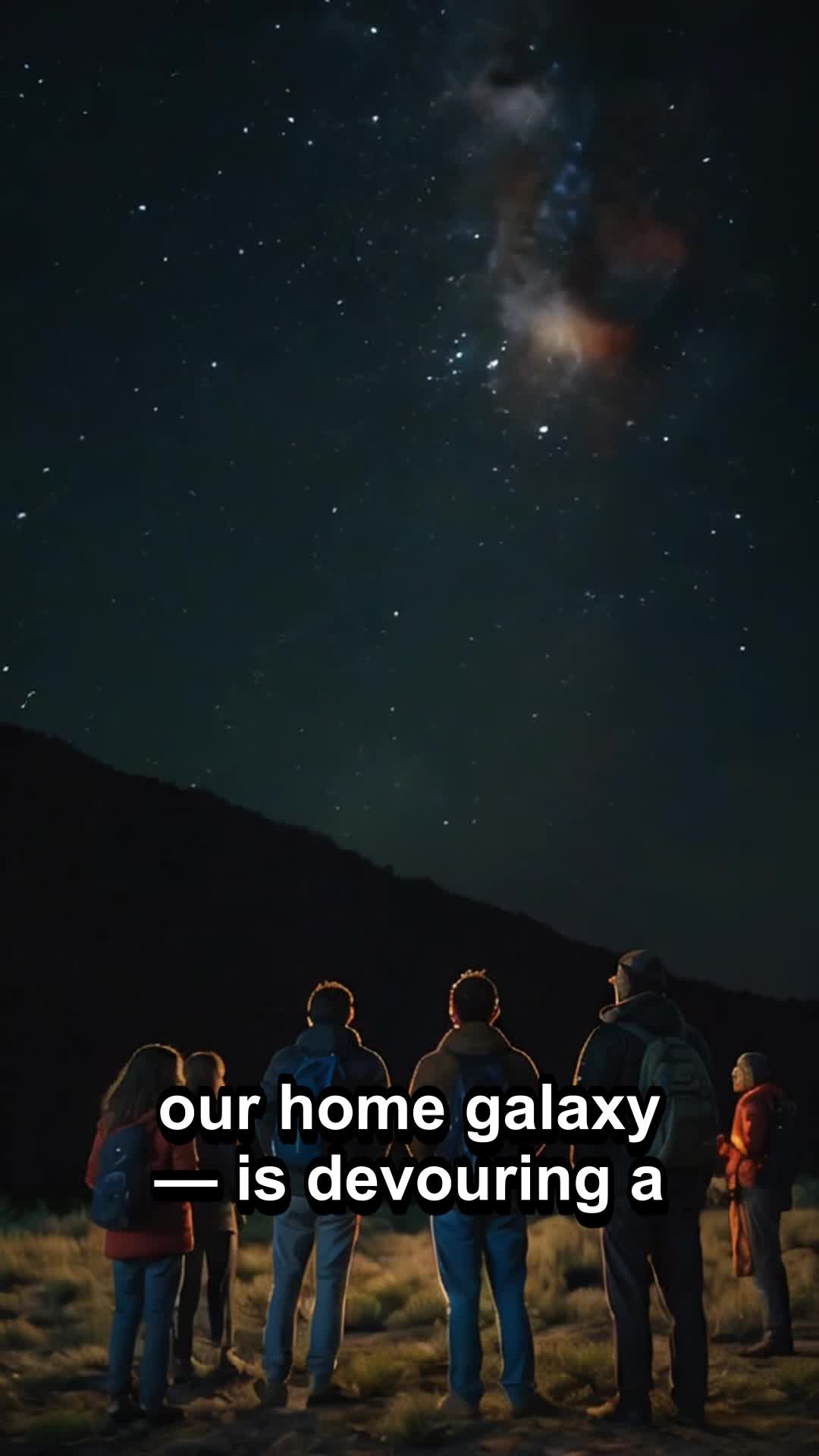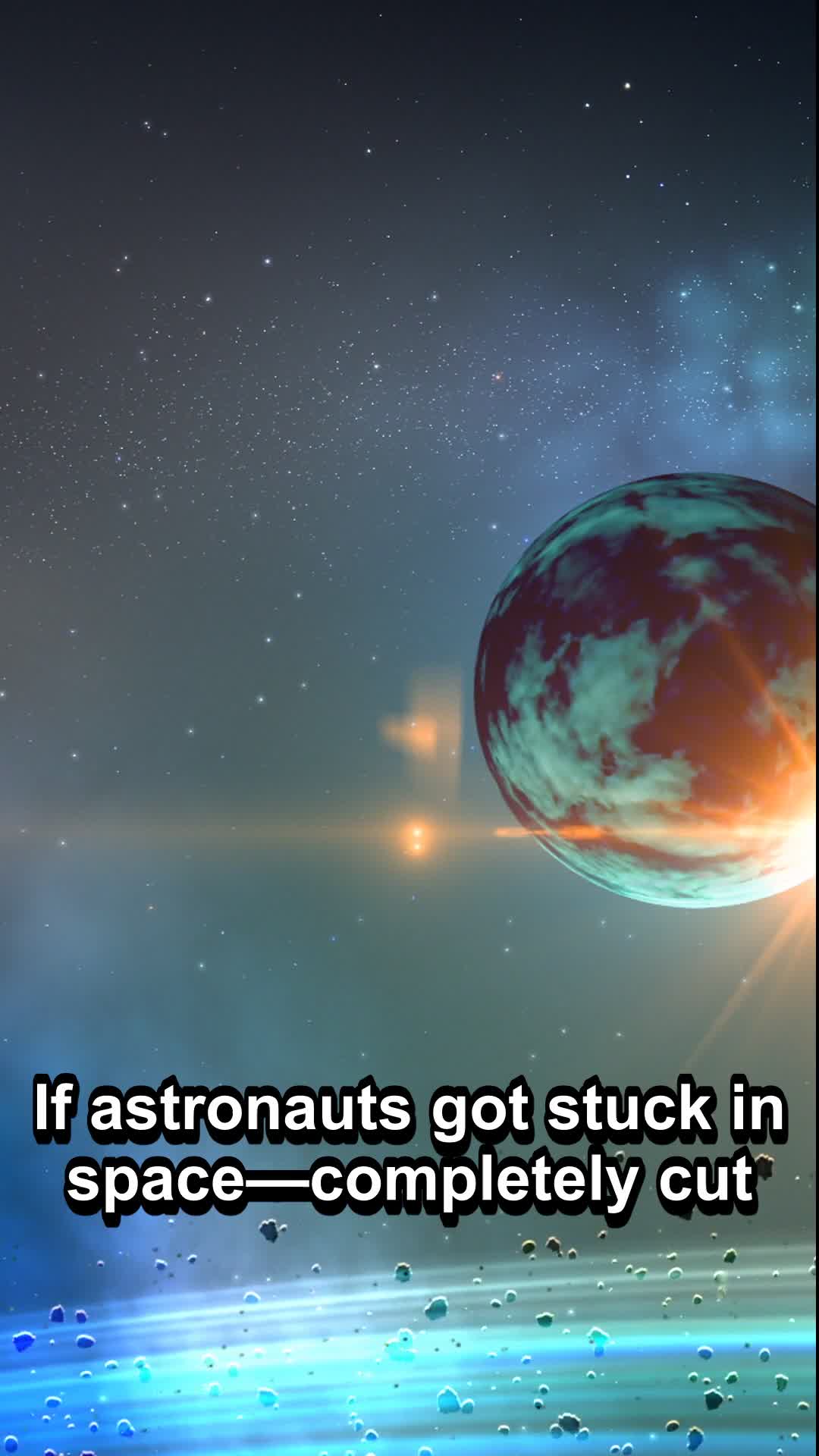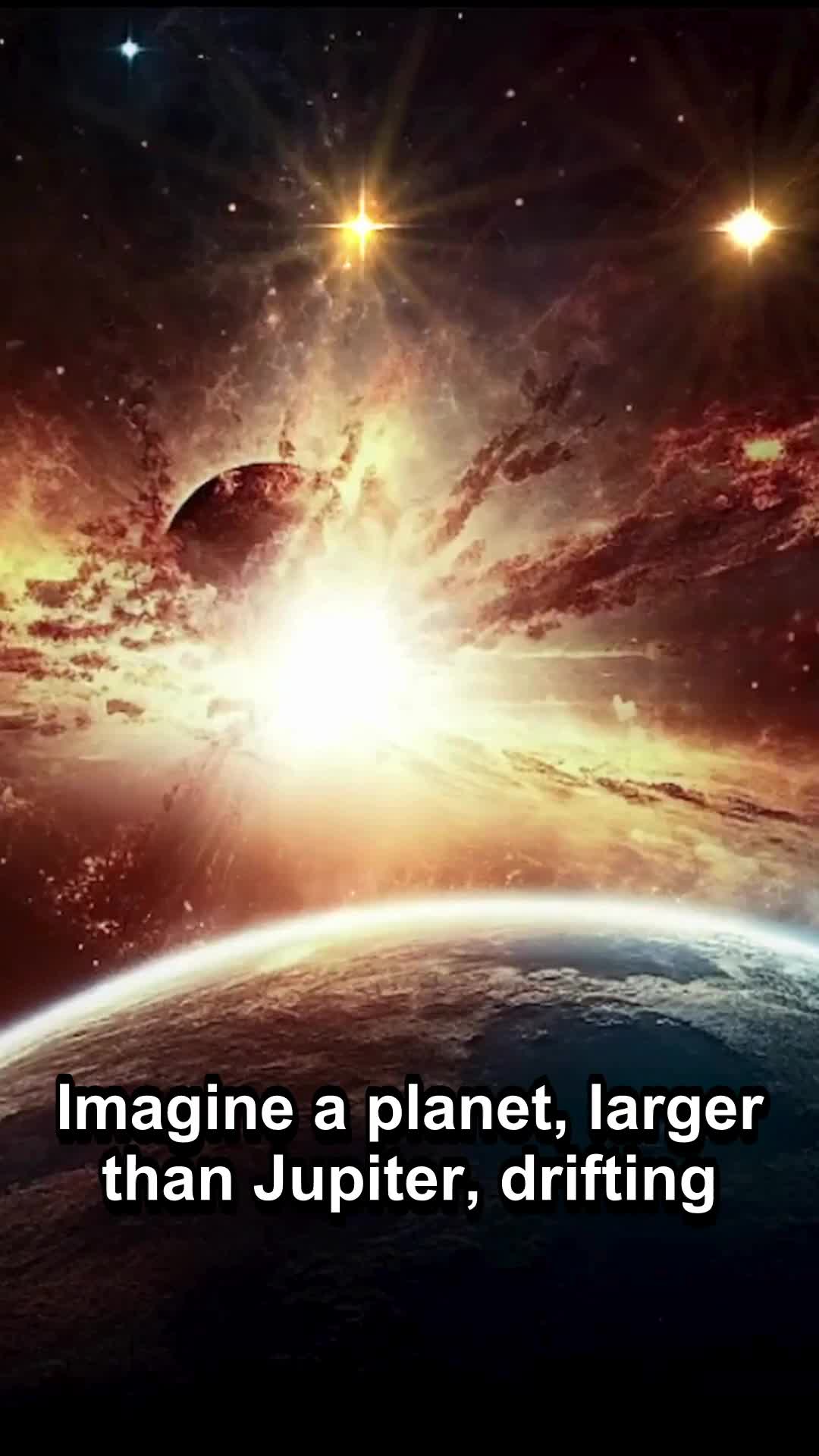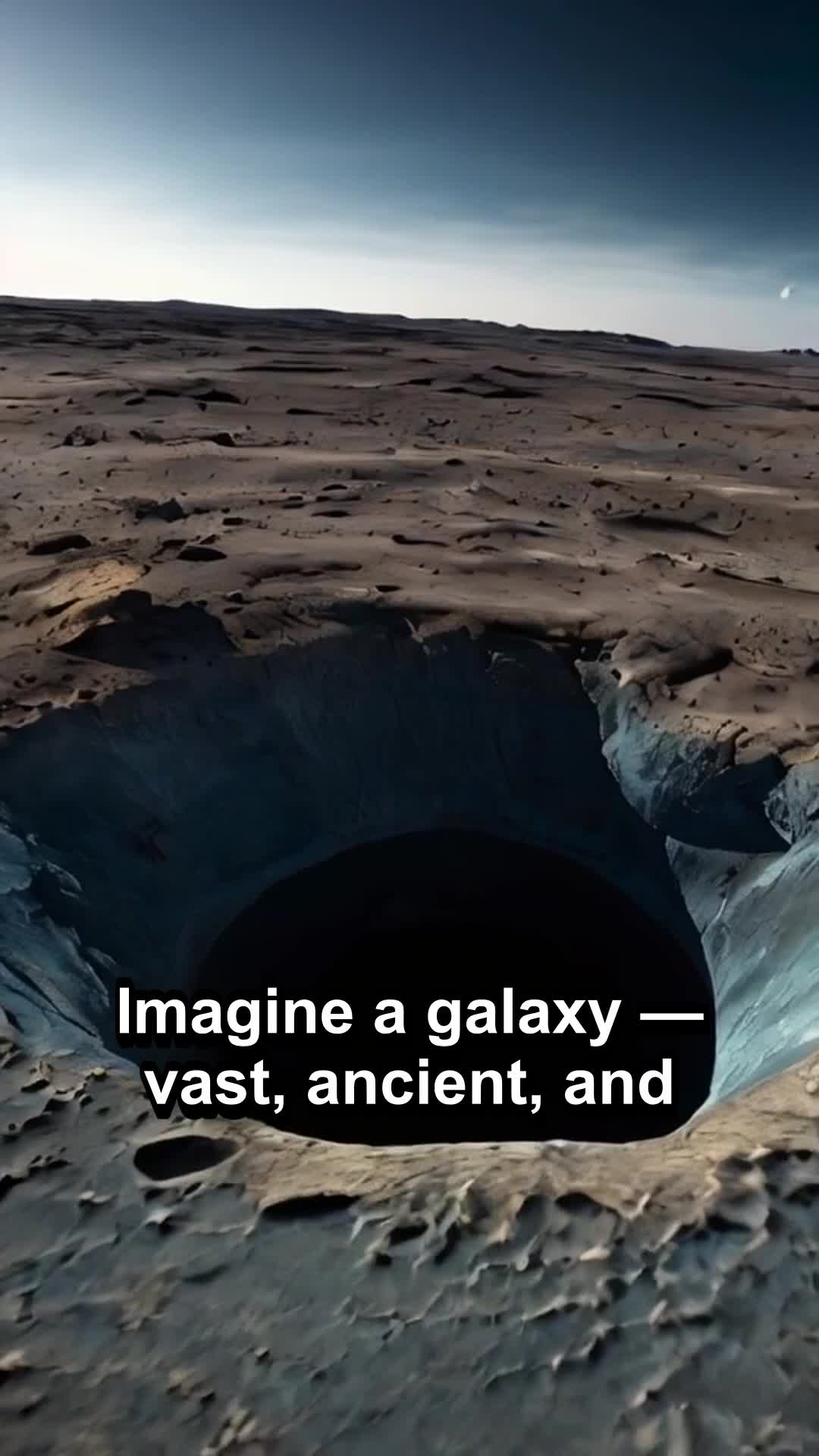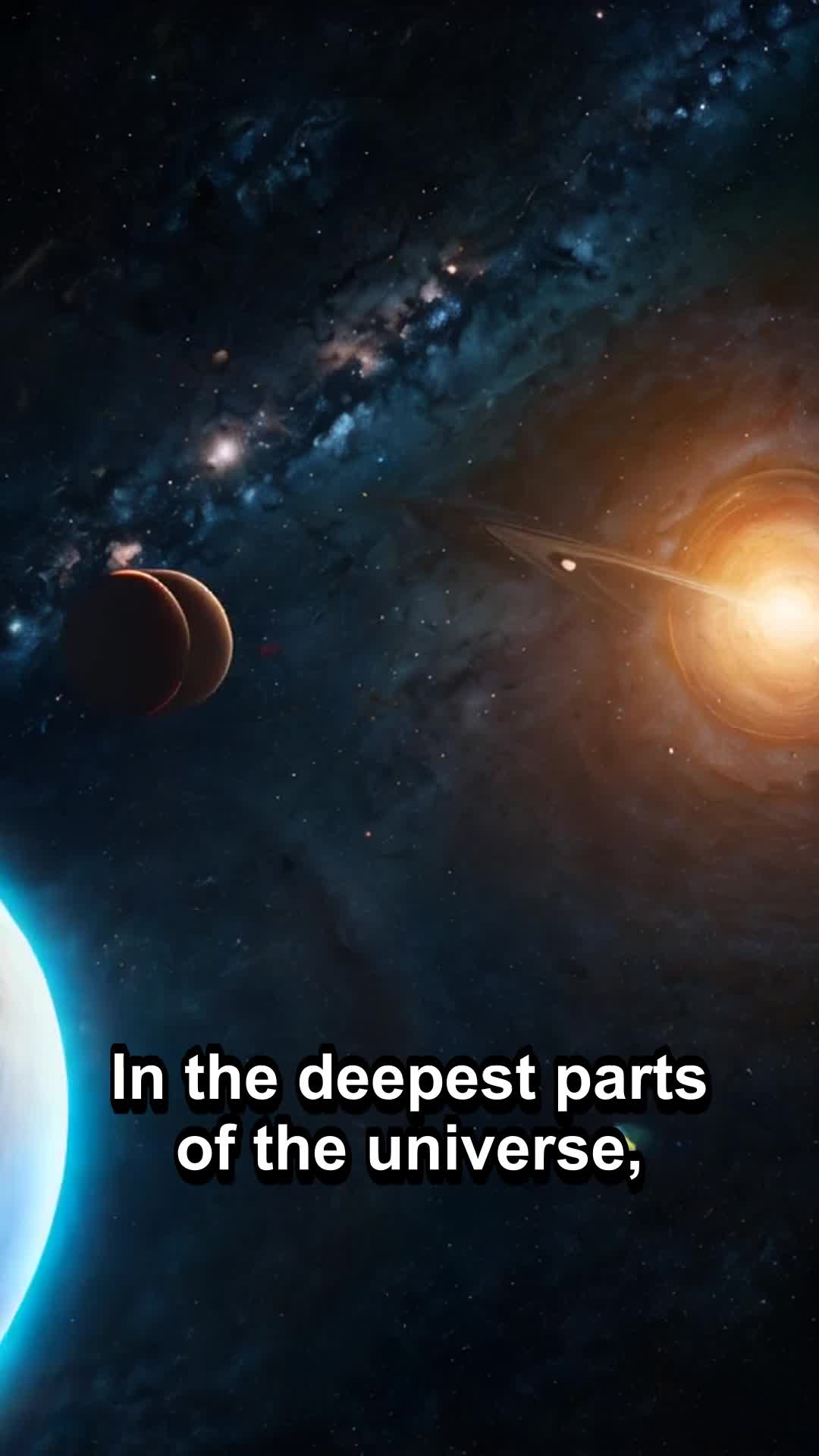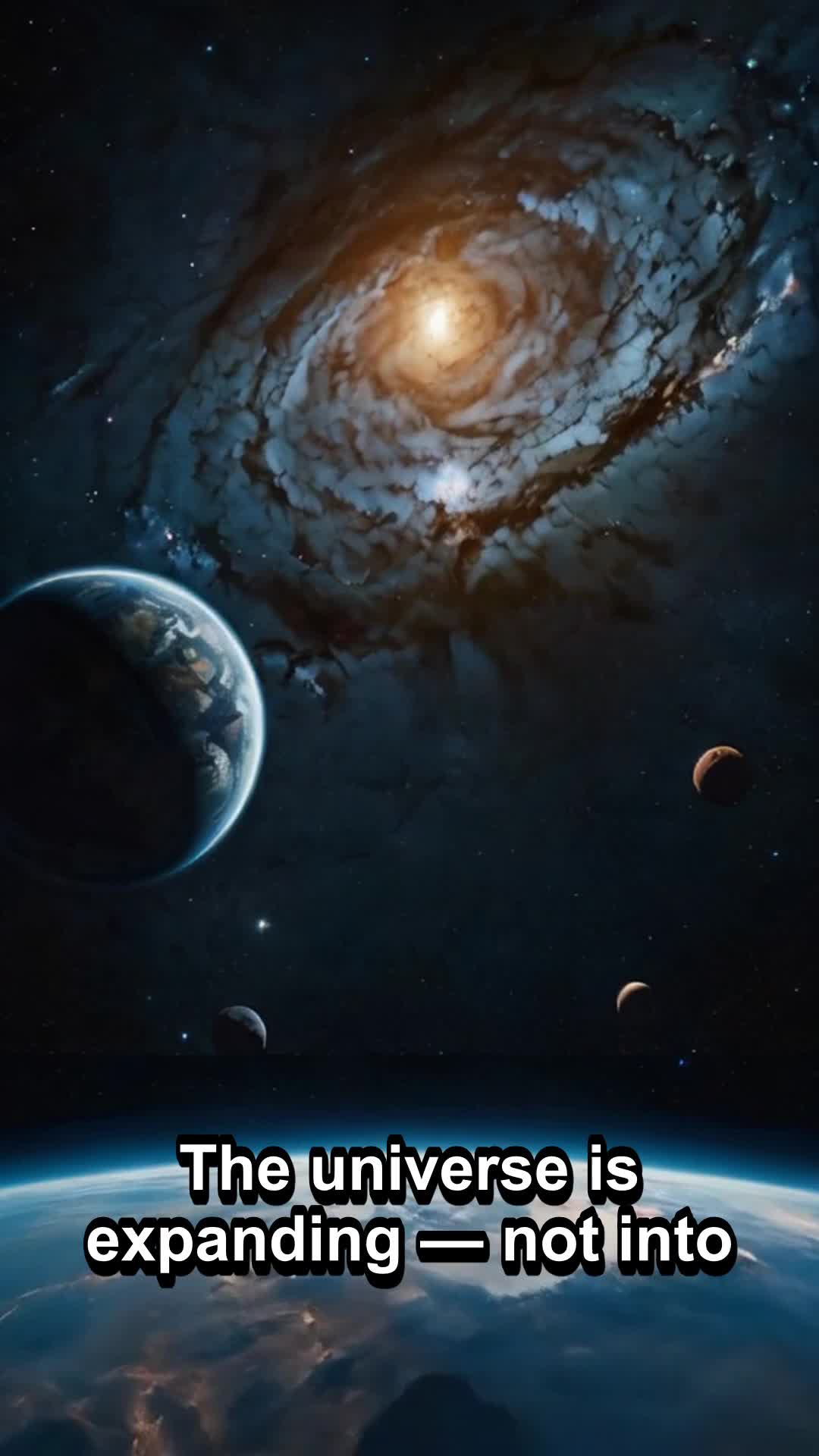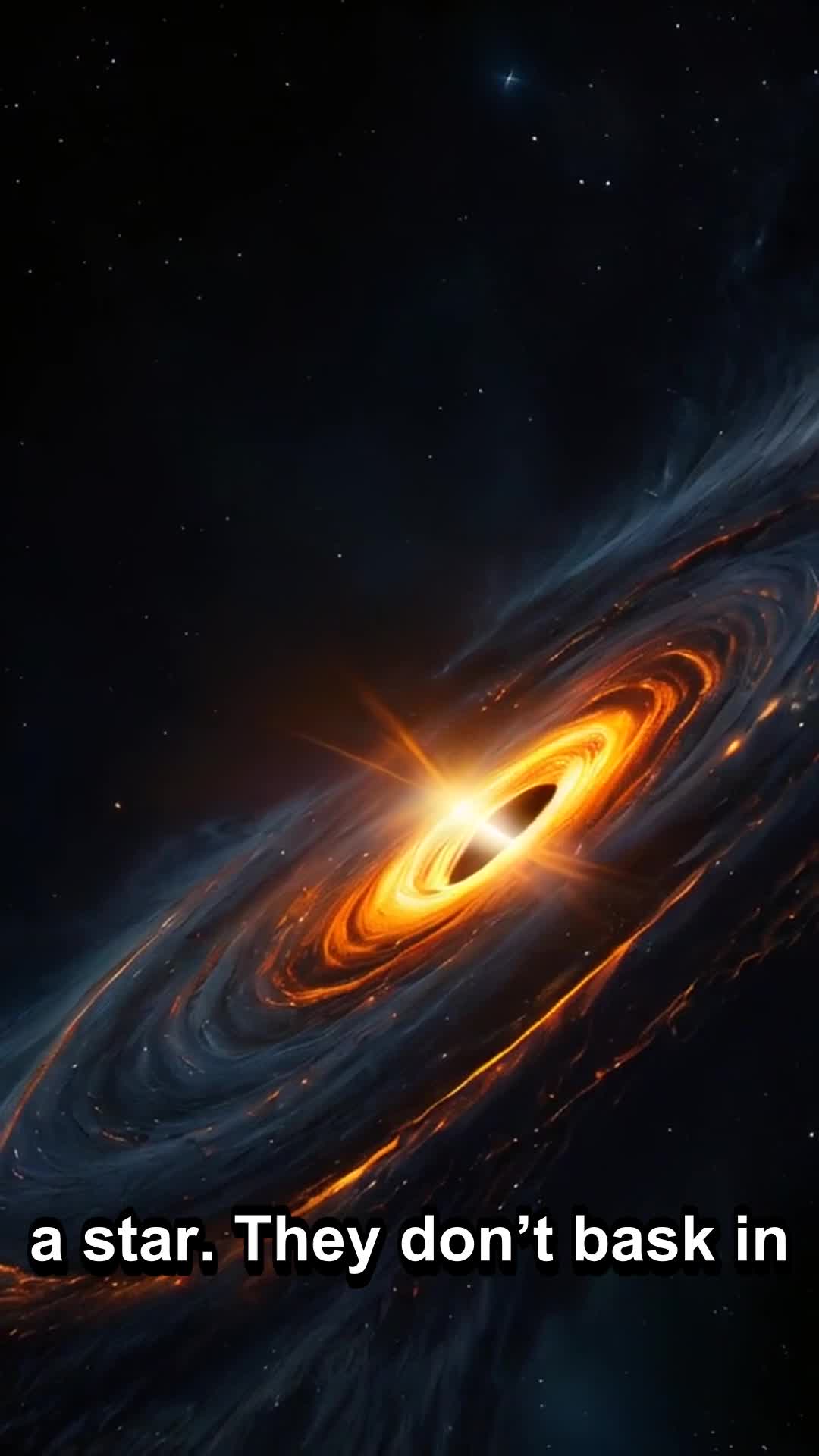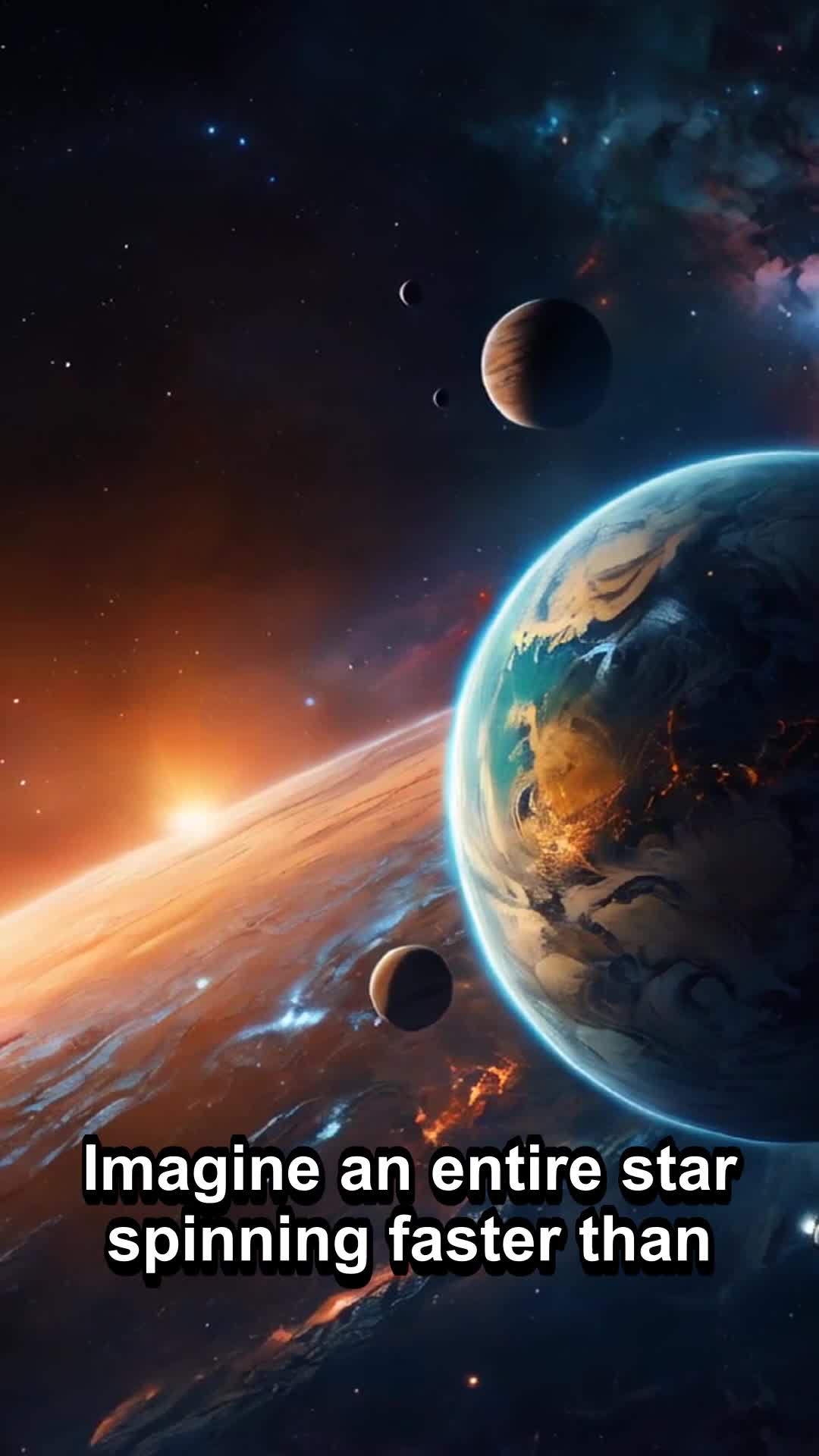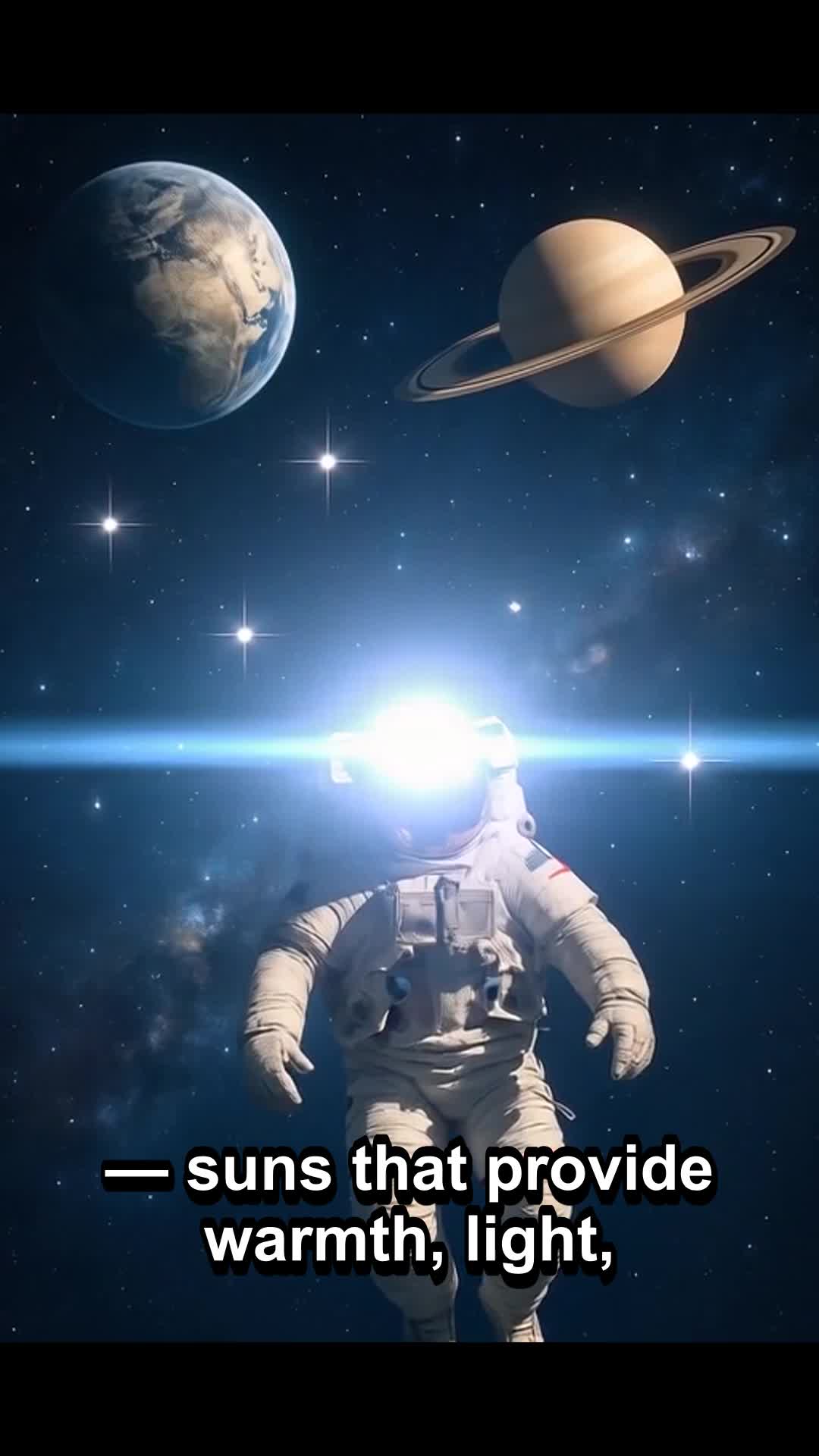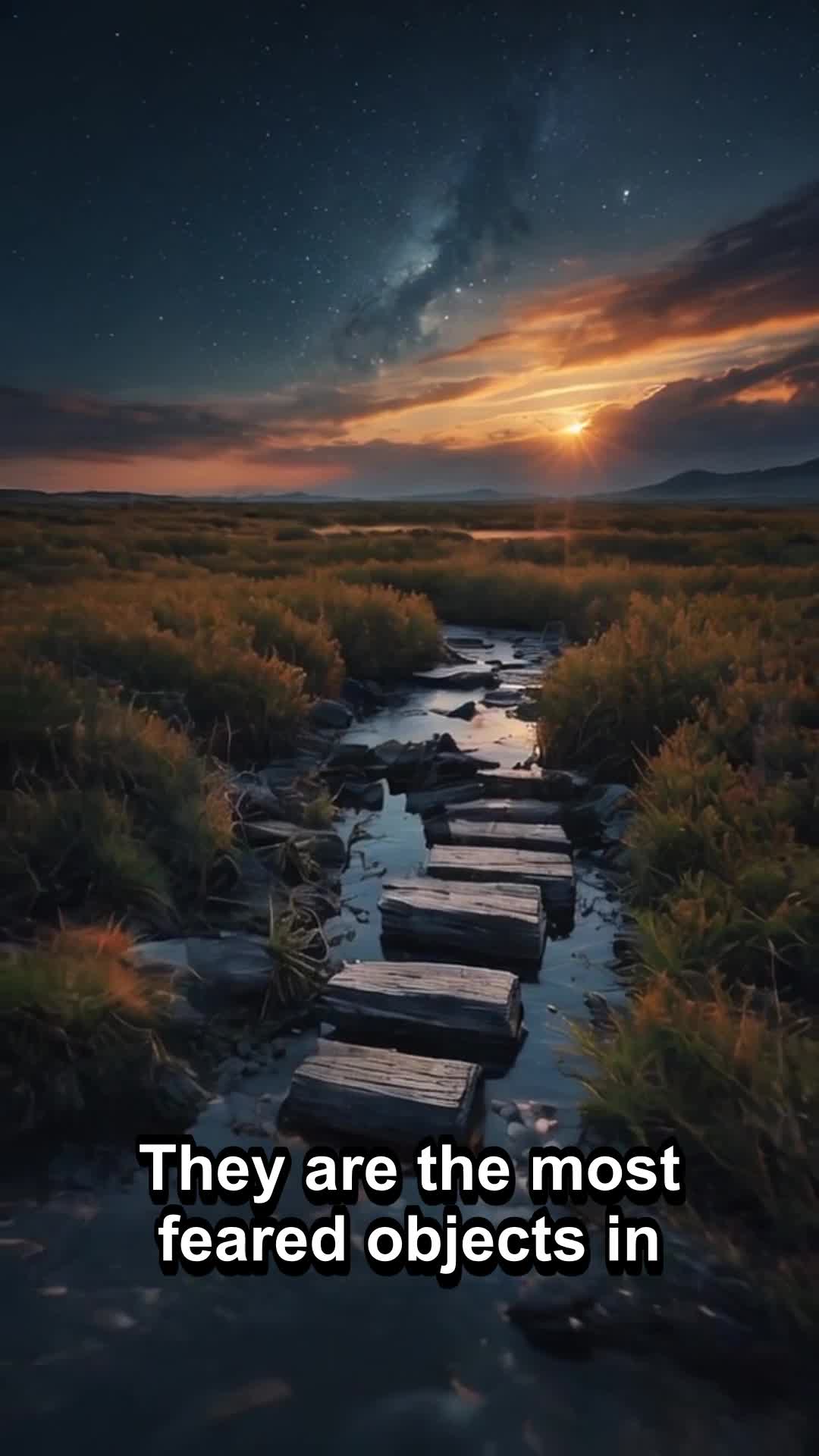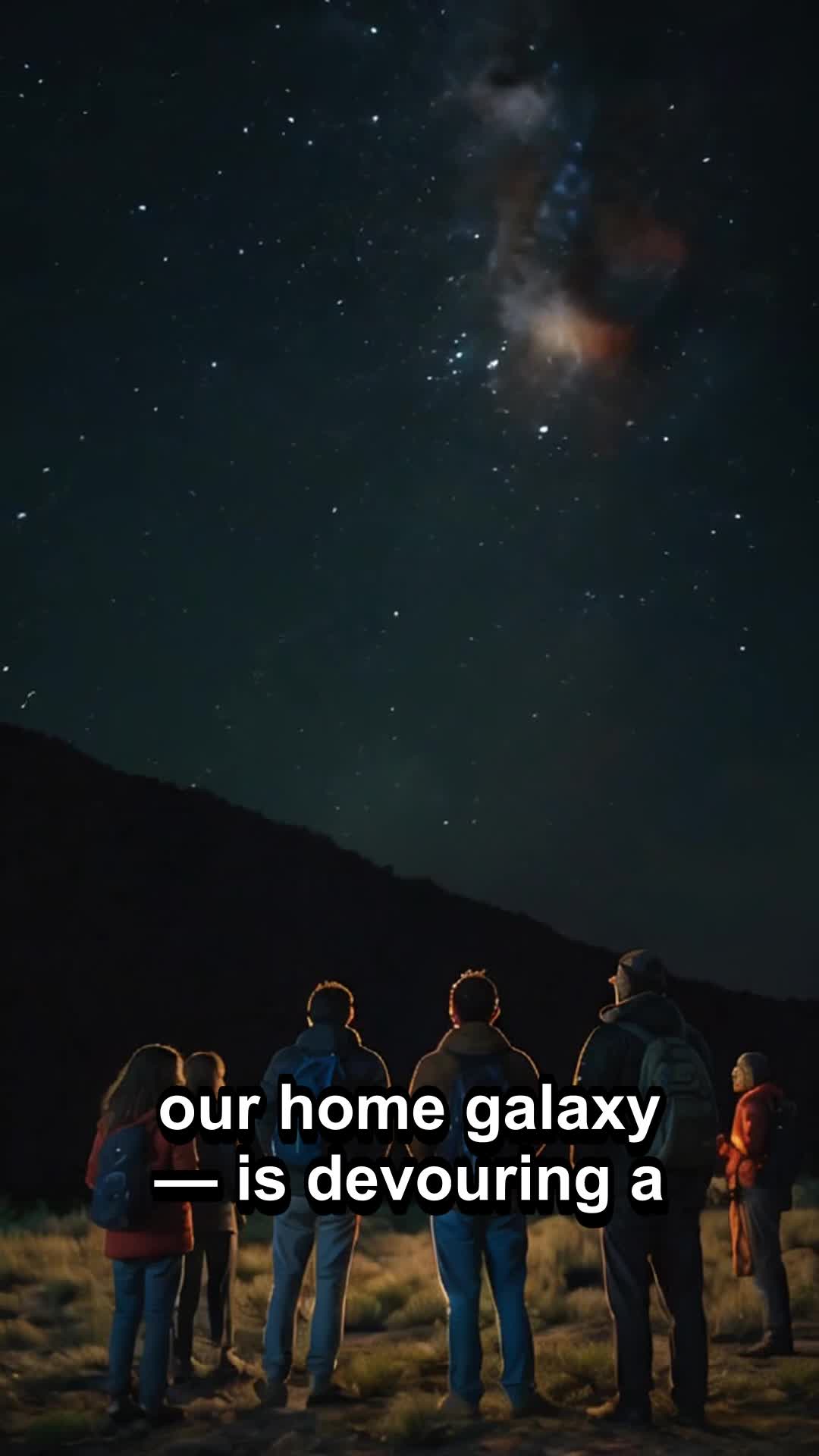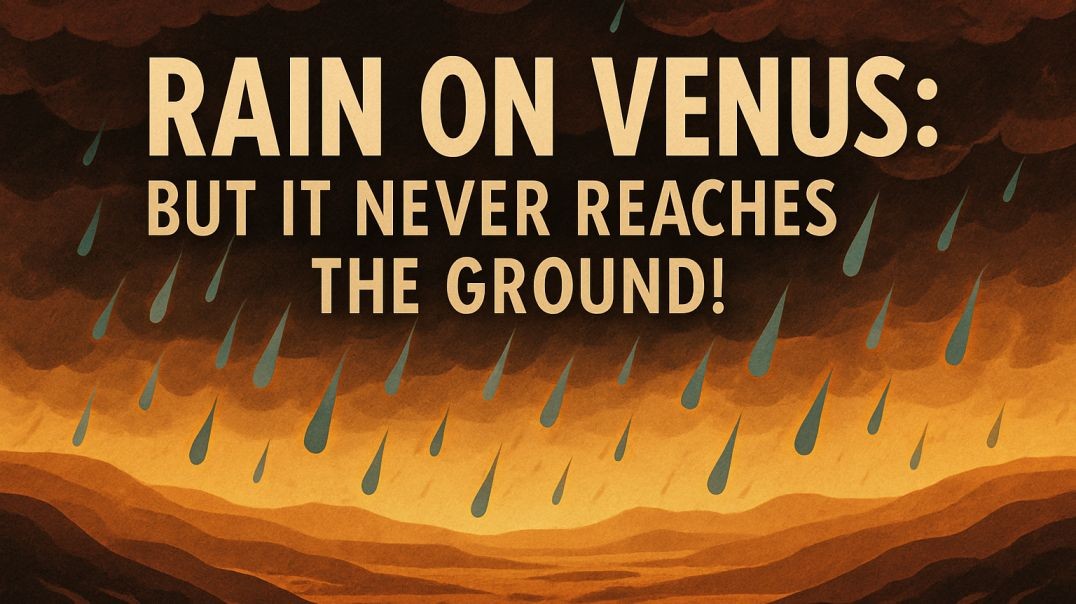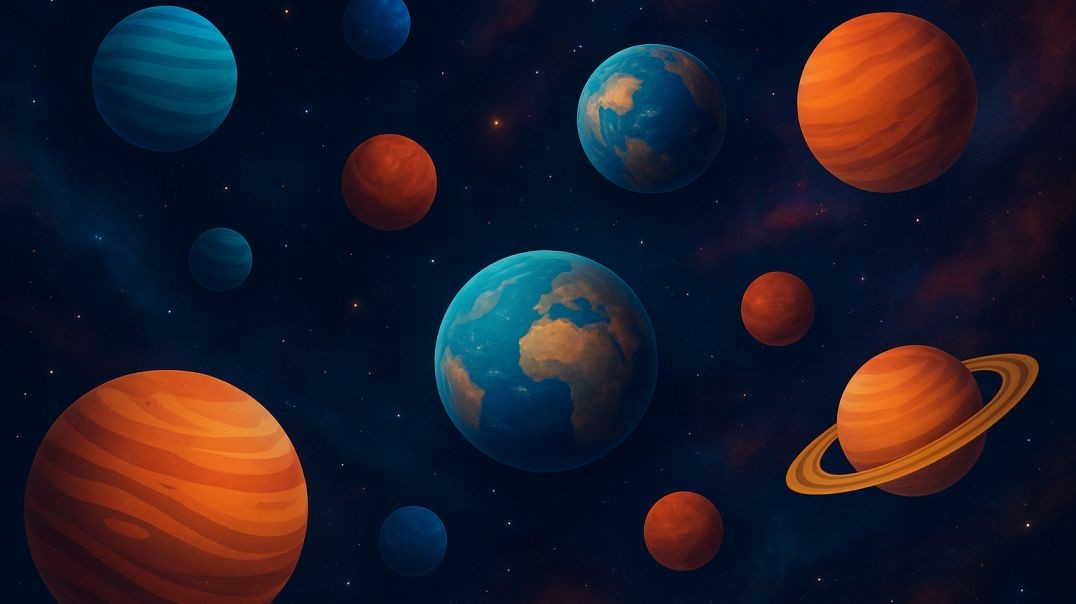Cine y Animación
In the vast expanse of the cosmos, a dramatic and awe-inspiring event is currently unfolding. This video, titled "Galactic Cannibalism Unveiled: Witness a Galaxy Devouring Its Neighbor," provides a stunning visualization and expert analysis of one galaxy absorbing another. The phenomenon, often referred to as galactic cannibalism, is a critical process in the evolution of galaxies. The video begins with a brief introduction to the concept of galaxies — massive systems consisting of stars, stellar remnants, gas, dust, and dark matter, bound together by gravity. It then zooms into a specific event where a larger galaxy, through gravitational forces, is pulling in and merging with a smaller neighbor. This cosmic interaction offers a rare glimpse into the dynamic processes that shape our universe. Expert commentary from astrophysicists and cosmologists provides deeper insights into the mechanics of this event. They discuss how the gravitational pull of the larger galaxy distorts the shape of the smaller one, leading to star formation, changes in orbital paths, and ultimately, the merging of galactic structures. The video uses high-resolution simulations to show how these colossal entities come together, with streams of stars and gas stretching across space, creating a spectacular display of cosmic artistry. The implications of such mergers are also explored. Viewers will learn about the role these events play in the life cycle of galaxies, including how they can trigger the formation of new stars and even the growth of supermassive black holes at the centers of galaxies. The video also touches on how studying these events helps astronomers understand the history and future evolution of our own Milky Way. In addition to the expert analysis, the video includes data from telescopes and space observatories, showcasing real images and animations to help viewers visualize the scale and significance of this galactic merger. The narrative is crafted to be accessible, ensuring that both astronomy enthusiasts and casual viewers can appreciate the complexities and beauty of the universe. To conclude, the video leaves the audience with a sense of wonder about the ongoing dance of gravity and motion in the cosmos, reminding us that even galaxies are not static but are continually evolving, interacting, and reshaping the fabric of the universe.
Imagine the vast, unfathomable expanse of space—an environment where the rules of Earth do not apply, and the margin for error is slim. "Trapped in the Void: The Perils of an Astronaut Lost in Space" is a gripping video that explores the harrowing scenario of an astronaut accidentally separated from their spacecraft, drifting helplessly into the cosmos. This detailed video begins by setting the scene in the cold, silent vacuum of space, where an astronaut on a routine mission faces an unexpected catastrophe. A failure in the spacecraft's docking mechanism during a spacewalk results in a dire situation: the astronaut is stranded, with limited resources and minimal hope for rescue. Through expert interviews and realistic CGI animations, the video delves into the physical and psychological challenges faced by the astronaut. It covers the immediate dangers of oxygen deprivation, extreme temperatures, and cosmic radiation. The narrative also explores potential rescue scenarios, examining both current technology and future innovations that could save lives in such extreme circumstances. "Trapped in the Void" also addresses the broader implications of space travel, emphasizing the importance of safety protocols, the advancements in space suit technology, and the rigorous training astronauts undergo to prepare for emergencies. It features insights from aerospace engineers, survival experts, and psychologists who discuss the resilience required to face such an ordeal and the teamwork necessary on Earth to orchestrate a successful rescue. The video not only captivates with its tense, edge-of-your-seat storytelling but also educates viewers about the realistic aspects of space exploration and the human factors involved. It serves as a stark reminder of the risks astronauts willingly accept to advance human knowledge and explore beyond our world. Concluding with a discussion on international cooperation in space rescue missions, the video highlights past incidents where astronauts faced dangers in space and how global efforts have evolved to ensure their safety. "Trapped in the Void" is an essential watch for anyone fascinated by space exploration, survival stories, or the limitless bounds of human courage and innovation.
In this captivating video, we delve into the enigmatic realm of rogue planets, astronomical objects that wander through space unattached to any star system. Unlike the planets in our solar system, rogue planets do not orbit a star. Instead, they drift through the galaxy, enveloped in darkness, making them some of the most mysterious celestial objects in the universe. The video begins by defining what rogue planets are and how they come to exist. It explains that these planets could be ejected from their original solar systems during the chaotic early stages of planetary formation or could have formed in isolation within a star-forming cloud. The narration is complemented by stunning visual animations that illustrate these complex processes in an easy-to-understand manner. Further into the video, we explore the scientific techniques used to discover and study these elusive planets. Techniques such as gravitational microlensing, which can reveal the presence of these planets as they pass in front of distant stars and momentarily focus their light, are discussed in detail. Viewers will gain an understanding of the challenges astronomers face in studying objects that emit no light of their own and are located at vast distances from Earth. The discussion then shifts to the potential implications of rogue planets on our understanding of the universe. Could these planets harbor life? What are the conditions on these wandering worlds? The video addresses these intriguing questions, drawing on the latest research and expert interviews to provide informed speculation and ongoing theories. Lastly, the video considers the future of rogue planet research. With advancements in space telescopes and detection techniques, our knowledge of these celestial nomads is expected to grow, opening new frontiers in astronomy and possibly reshaping our understanding of planetary science. This comprehensive guide to rogue planets is not just a scientific overview but an invitation to wonder about the vast complexities of our universe. Join us as we uncover the secrets of these lonely planets in our quest to understand the cosmos.
In this captivating video, we explore an extraordinary astronomical discovery: a galaxy harboring not one, but six black holes, all locked in a mutual orbital dance. This rare configuration presents a phenomenal scenario for astrophysicists and space enthusiasts alike. The video opens with a detailed animation visualizing the positions and movements of these black holes within their host galaxy. These massive entities, each with gravitational forces strong enough to warp spacetime, orbit each other in a delicate balance, showcasing a cosmic ballet of epic proportions. Throughout the video, expert astrophysicists explain the significance of this discovery. They discuss how the unique arrangement of multiple black holes in a single galaxy challenges our existing understanding of galactic formation and evolution. The video includes simulations that depict how such a system might have formed, possibly originating from a series of galaxy mergers that brought their respective central black holes into close proximity. Additionally, the video delves into the potential consequences of such a system on the surrounding galactic environment. Topics covered include gravitational wave emissions, which are ripples in spacetime caused by the black holes’ interactions, and their detectability by instruments like LIGO and Virgo. These waves provide crucial insights into events occurring billions of light-years away. The latter part of the video discusses the implications for theories of gravity and general relativity, with experts debating and discussing future research directions. Viewers are also treated to state-of-the-art visualizations based on real data, helping to demystify complex scientific concepts and bring the wonders of the universe closer to home. The video concludes by highlighting the ongoing efforts in astronomical research and the technological advancements enabling these discoveries. It encourages viewers to stay curious and engaged with space science, emphasizing the vast, unexplored frontiers awaiting further exploration.
In an awe-inspiring revelation that has intrigued astronomers and space enthusiasts alike, a new video titled "A Giant Wall Was Found in Space and No One Knows What Built It" delves into the discovery of a colossal structure in the cosmos, which has been aptly named "The Giant Wall". This detailed video provides an in-depth analysis of the findings by leading astronomers who stumbled upon this enigmatic structure, which stretches across millions of light years, making it one of the largest structures ever identified in the universe. The video begins with a brief introduction to cosmic structures, explaining how galaxies are not randomly distributed throughout space but are instead grouped into clusters, superclusters, and even larger configurations. It then transitions into the discovery of The Giant Wall, detailing the instruments and methodologies used by astronomers to detect such a distant and massive object. Through stunning visualizations and expert interviews, the video explores several theories about the origins and composition of The Giant Wall. Astronomers speculate whether this could be a natural phenomenon resulting from the vast forces at play in the universe or if it suggests something more, possibly hinting at structures influenced or created by advanced extraterrestrial civilizations. Furthermore, the video addresses the implications of such a discovery on our understanding of the universe. It questions the current cosmological theories and discusses how The Giant Wall fits into the larger puzzle of cosmic architecture. The narrative is enriched with insights from astrophysicists who ponder the role of dark matter and gravity in forming such massive cosmic structures. In addition to scientific analysis, the video also captures the human element — the sheer wonder and curiosity that such discoveries inspire. It concludes with a discussion on the future of space exploration and the technological advancements necessary to explore these distant cosmic phenomena more thoroughly. This video is a must-watch for anyone fascinated by the mysteries of space and the endless possibilities that lie beyond our current scientific understanding. It not only educates but also inspires viewers to look up at the stars and wonder what other secrets the universe holds.
Have you ever wondered what exists at the very edge of our universe? "Unveiling Mysteries: What Really Lies at the Universe's Boundary?" delves deep into one of the most intriguing questions in cosmology. This comprehensive video explores the theoretical and physical boundaries of the universe, engaging with leading theories and the latest research to offer a clearer picture of the cosmic frontier. The video begins by introducing viewers to the basic concepts of the universe's structure, explaining in accessible terms how the universe is expanding and what that means for its boundaries. It challenges the common misconception that there is a physical 'edge' to the universe, instead presenting the idea of the observable universe and how it differs from the entire universe. Expert interviews are woven throughout the video, featuring prominent astronomers and physicists who discuss their latest research findings and theoretical insights. These discussions include the implications of cosmic inflation, the role of dark energy in the expansion of the universe, and the potential for multiple universes or a multiverse scenario. Additionally, the video explains complex concepts such as the cosmic microwave background radiation, the shape of the universe, and how these elements provide clues about the universe's overall topology and boundaries. Visual animations help illustrate these sometimes abstract concepts, making them understandable and engaging for viewers with varying levels of prior knowledge. "Unveiling Mysteries: What Really Lies at the Universe's Boundary?" not only educates but also inspires awe for the vastness and complexity of the cosmos. It encourages viewers to think about big questions in new ways, emphasizing the ongoing nature of scientific inquiry and our ever-evolving understanding of the universe. This video is perfect for anyone curious about space, astronomy, and the fundamental nature of reality. Whether you're a seasoned astrophysicist or a casual science enthusiast, this video will expand your horizons and deepen your understanding of the universe.
In the depths of space, beyond the boundaries of their birth solar systems, rogue planets wander in solitude. This captivating video, "Discover Rogue Planets: Wandering Worlds Without a Solar Home," delves into the mysterious phenomenon of planets that have been ejected from their original solar systems. These lone worlds, often cast out due to gravitational disturbances or stellar evolution, embark on a solitary journey through the cosmos. The narrative begins with an introduction to the concept of rogue planets, explaining how these celestial bodies are not anchored by the gravity of a nearby star, and thus do not orbit a sun. The video employs stunning visuals and animations to depict how interactions between planets and passing stars can disrupt stable orbits, leading to a planet being flung into the cold, dark expanse of space. Experts in astrophysics provide insights into the detection and study of these elusive planets. They discuss the challenges involved in observing rogue planets, which do not emit light and are far from any light source. Techniques like gravitational microlensing, where scientists observe the effects of a rogue planet's gravity on light from distant stars, are highlighted as crucial tools for discovering these hidden worlds. The video also explores the implications of rogue planets on our understanding of planetary formation and survival. It presents theories suggesting that rogue planets could outnumber the stars in our galaxy, raising intriguing questions about the abundance and diversity of such planets. Could these planets support life? What kind of harsh conditions might exist there? These questions are pondered with a sense of wonder about the resilience of life in extreme environments. In addition to scientific explanations, the video features breathtaking artistic interpretations of what the surface of a rogue planet might look like. From icy landscapes to rocky deserts devoid of light, these visualizations stir the imagination about worlds untethered to any star. "Discover Rogue Planets: Wandering Worlds Without a Solar Home" not only informs but also inspires viewers to consider the vastness and variety of the universe. It's a reminder of the countless stories waiting to be told in the silent depths of space, about planets we are only just beginning to understand.
In this captivating video titled "The Star That Spins 700 Times Every Second," we delve into the mesmerizing world of pulsars, focusing on one of the universe's most astonishing phenomena. This documentary-style video begins with a brief introduction to pulsars—highly magnetized, rotating neutron stars that emit beams of electromagnetic radiation. The video explains how these beams are only observable when they point toward Earth, likening them to cosmic lighthouses in the vast ocean of space. The main subject of the video is a particular pulsar that spins at an incredible rate of 700 times per second, making it one of the fastest-spinning stars known to scientists. Our journey starts with the discovery of this pulsar, detailing the technologies and methodologies astronomers use to detect and study these distant celestial bodies. The narrative then explores the significance of this discovery in the broader context of astrophysics, offering insights into how such findings challenge existing theories and prompt new questions about the life cycle of stars. Throughout the video, stunning visuals and animations help viewers visualize concepts that are difficult to grasp, such as the extreme density of neutron stars and their powerful magnetic fields. Expert interviews interspersed throughout the video add depth to the discussion, with astrophysicists and astronomers sharing their perspectives on the implications of studying such extreme objects in the universe. Moreover, the video addresses the broader impact of this research on technology and even philosophy, exploring how understanding the universe's extremes pushes the boundaries of human knowledge and technology. The conclusion of the video reflects on the future of space exploration and the next steps in studying pulsars, leaving viewers with a sense of wonder about the universe and our place within it. This video is a must-watch for anyone fascinated by the mysteries of the cosmos, offering not only education but also inspiration derived from the incredible achievements of human curiosity and ingenuity in the face of the universe's vastness.
In the vast expanse of space, a groundbreaking discovery has been made: a planet orbiting a dead star, known scientifically as a white dwarf. This video dives deep into the implications and scientific marvel of this finding, offering viewers an unprecedented look at one of space's most intriguing phenomena. The documentary-style video begins with an introduction to white dwarfs, the remnants of stars that have exhausted their nuclear fuel and shed their outer layers. We explore how these stars, once like our own sun, transform into dense, cooling orbs about the size of Earth. From there, the focus shifts to the recently discovered planet. This celestial body, defying previous expectations, orbits its white dwarf at a remarkably close distance, surviving the star's dramatic death throes. The video explains the significance of this survival, highlighting how it challenges existing theories about planetary system development and decay. Astrophysicists and planetary scientists provide expert commentary throughout the video, discussing the methods used to detect such planets and the potential for finding more. They delve into the technologies, like the transit method and gravitational lensing, that have made these observations possible. Moreover, the video addresses the big questions this discovery raises about the future of our own solar system and others. What happens to planets as their stars age and die? Could life find a way to endure on planets orbiting dead stars? Theoretical models and simulations provide insights into these questions, suggesting scenarios where life might adapt to extreme and changing conditions. In addition to scientific analysis, the video offers stunning visualizations of the white dwarf and its planet, based on the latest astronomical data and artist's interpretations. These visuals not only help viewers understand the scale and nature of these cosmic bodies but also enhance the awe-inspiring beauty of the universe. As the video concludes, it invites viewers to ponder the resilience of planetary systems and the endless mysteries awaiting discovery in the cosmos. Whether you're a seasoned astronomer or a curious newcomer, this video will deepen your appreciation for the dynamic and ever-evolving universe.
Dive into the enigmatic universe of black holes with our captivating video, "Unveiling the Mysteries of Black Holes: An In-Depth Exploration". This detailed video offers viewers a comprehensive look at one of the most fascinating phenomena in space science. Starting with a brief introduction to what black holes are, the video delves into their origins, discussing both stellar black holes and supermassive black holes found at the centers of galaxies. We explore the groundbreaking research and theories by eminent scientists like Stephen Hawking and Albert Einstein, shedding light on how these cosmic giants defy the laws of physics as we know them. The video also features stunning visual simulations and real telescope images to illustrate how black holes interact with their surroundings, including the process of accretion and the infamous event horizon. Further, our expert interviews provide insights into recent discoveries and ongoing research, highlighting significant events such as the first-ever image capture of a black hole's event horizon by the Event Horizon Telescope (EHT). We also discuss the role of black holes in the broader context of the universe, including galaxy formation and gravitational waves. Whether you're a student, educator, or just a curious mind eager to understand more about the universe, this video is designed to enrich your knowledge and spark your fascination with the cosmos. Join us on this extraordinary journey through time and space as we uncover the secrets of black holes.
This is a video about This Galaxy Is Eating Another One Right Now
"Plants Are Surviving in Space — Here's How It Could Change Humanity Forever"
Follow me : https://www.youtube.com/channe....l/UCnDJqQ6YxwnzhjIhn
Galaxies are often pictured as serene islands of stars adrift in a calm universe. But the truth is far more brutal. The cosmos is a battleground, and the Milky Way — our home galaxy — is a predator.
Right now, it’s devouring a smaller, fragile companion: the Sagittarius Dwarf Galaxy. Slowly, Sagittarius is being torn apart, its stars ripped into long streams that weave around the Milky Way like threads of a ghostly tapestry.
But this is not a rare event. Our galaxy has built much of its enormous size by consuming others. Over billions of years, it has swallowed dozens of smaller galaxies, leaving behind faint rivers of stars — silent evidence of past cosmic feasts. The very halo that surrounds the Milky Way is littered with the remnants of ancient victims. When you look up at the night sky, many of the stars you see could once have belonged to another galaxy entirely, now stripped of their past and reborn as part of our own.
Yet the story doesn’t end there. In about four billion years, the Milky Way will face a far greater force: the
Andromeda Galaxy. Drawn together by mutual gravity, these two giants will collide in a spectacular event, shredding and reshaping both galaxies into a new, larger creation. For all its history of conquest, the Milky Way is ultimately just another player in the universe’s endless cycle of destruction and rebirth.
Galactic cannibalism is not a rare exception — it’s the rule. Growth demands sacrifice. Existence demands dominance. In the grand theatre of the cosmos, every galaxy is both creator and destroyer. And we are living witnesses, riding the swirling edge of a predator that, one day, will be consumed itself.
Black holes are already terrifying — but some aren’t just massive traps of gravity... they are spinning monsters. Scientists have found black holes that rotate so fast, their event horizons — the "point of no return" — practically vanish from sight.
Follow : https://www.youtube.com/channe....l/UCnDJqQ6YxwnzhjIhn
Follow me on my space youtube chanel : https://www.youtube.com/channe....l/UCnDJqQ6YxwnzhjIhn
Rain on Venus: But It Never Reaches the Ground! Venus is often called Earth's twin, but beneath its golden clouds lies a deadly mystery — it rains acid, but not a single drop ever touches the ground. High above, thick clouds of sulfuric acid form as if preparing for a massive storm. But as the acid droplets begin their deadly descent, something shocking happens: the surface heat of Venus, hotter than an oven at 475 degrees Celsius, causes the rain to evaporate before it ever hits the ground. It’s a ghost storm, an endless rain that dies mid-fall.
Lakes on Titan: But It’s Not Water! #explore follow me at youtube space chanel : https://www.youtube.com/channe....l/UCnDJqQ6YxwnzhjIhn
Is Earth the only home for life in the universe? Or are we just one world among countless others teeming with life? 🌍🛸 In this groundbreaking video, we analyze every major planet — and some surprising moons — searching for real signs of alien life that scientists are only now beginning to understand.
From the mysterious methane plumes of Mars to the hidden oceans beneath Europa’s icy crust, the clues are piling up faster than ever before. We break down planet by planet where life could exist, what kind of environments could support it, and the most shocking discoveries that hint we may not be alone.
You’ll learn about the planets and moons with the highest potential for harboring microbes, complex organisms, or even intelligent civilizations. We’ll dive into NASA missions, SpaceX ambitions, and new telescope data revealing secrets we couldn’t even imagine a decade ago.
Could Venus’ clouds be hiding life? Is Titan's methane sea a cradle for exotic organisms? What’s lurking beneath the frozen shell of Enceladus? The answers will blow your mind.
Get ready for real science, real possibilities, and the real hope that somewhere out there, life might be thriving in ways we are just beginning to comprehend.
If you’re fascinated by space exploration, alien life theories, and the biggest mysteries of the cosmos, this is a journey you don’t want to miss. 🌌
Watch until the end — the final revelations will leave you questioning everything you thought you knew about life in the universe.
What would you do if a nuclear bomb exploded right now?
Most people have no idea — and that deadly mistake could cost lives. In this urgent video, you’ll learn the 7 critical steps you must take immediately after a nuclear attack to dramatically increase your chances of survival.
From finding instant cover to shielding yourself from deadly radiation, we cover the real, science-backed methods you can use to survive the unthinkable. Discover how to protect your body within seconds of the blast, how to identify the safest shelters, and how to purify your surroundings when every second matters.
You’ll also find out what you absolutely must avoid doing — because even a small mistake could be fatal after a nuclear explosion. Learn what supplies to have ready right now, how to reduce your radiation exposure fast, and why the first 48 hours after an attack are the most dangerous.
This is not just theory — these are real, tested survival tactics recommended by experts and disaster preparedness authorities. In a time of global tension, you can't afford to be unprepared.
Every second counts.
Every decision matters.
Your survival depends on knowing these steps.
Don’t let fear paralyze you. Arm yourself with the knowledge that could save your life and the lives of your loved ones. Watch this video till the end and be ready for anything. Stay alert. Stay alive.
